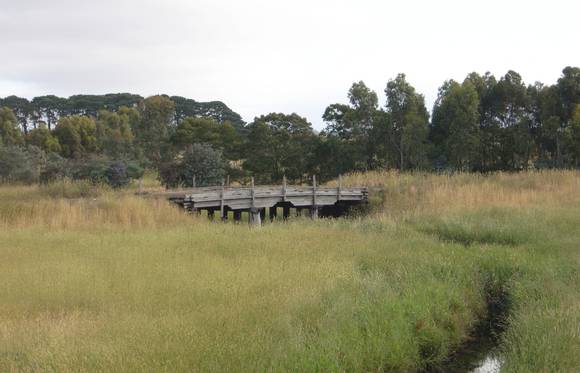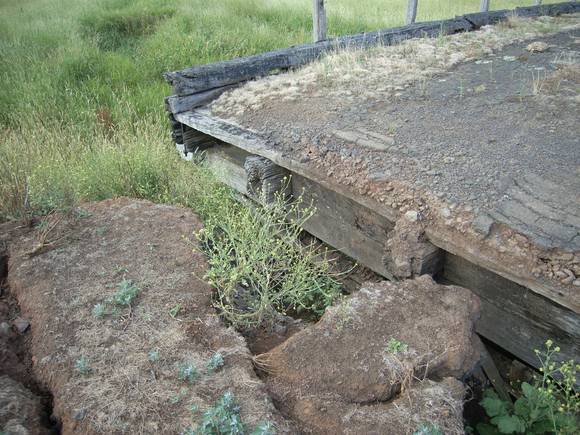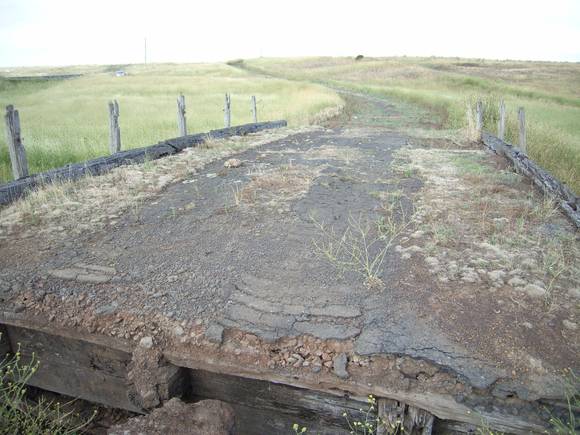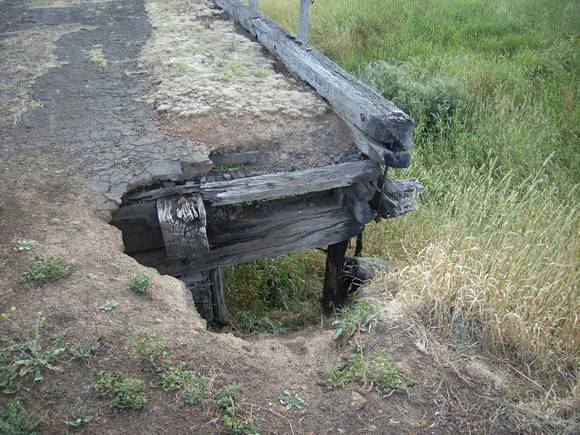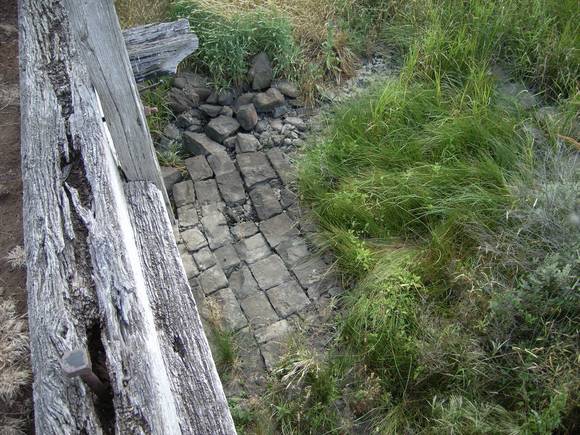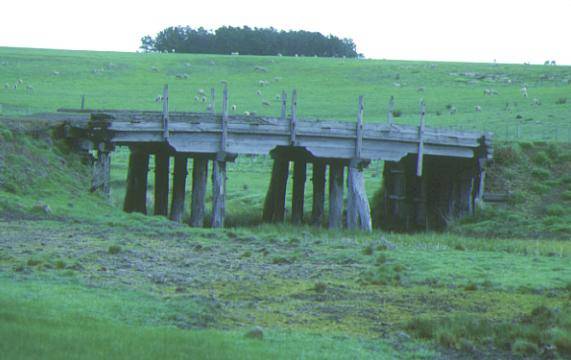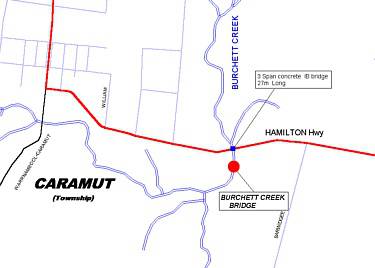| Back to search results » | Back to search page » |
|
BURCHET CREEK BRIDGE
Other NameBURCHETTS CREEK BRIDGE LocationOVER BURCHETT CREEK, OFF HAMILTON HIGHWAY CARAMUT, MOYNE SHIRE
File NumberHER/1999/000150LevelRegistered |
|
Statement of Significance
What is significant?
Burchett Creek Bridge is situated beside the modern Hamilton Highway on the old Caramut-Hexham Road crossing of Burchett Creek immediately east of Caramut township. Although not possible to date exactly, the bridge is of the period before the 1893 Depression checked bridge construction generally, and most likely dates to the later 1870s when the Hexham-Caramut Road was first officially classified as a Main Road. It is a three-span timber-beam bridge on timber piers and timber abutments, with fender piles, squared-timber beams and a transverse-timber deck, heavy diagonally-spliced squared-timber gravel beams, and the meagre remnants of timber side-rails. Heavy squared-timber caps at the top of timber piers have ogee-shaped ends, and the corbels above the piers are also of classical ogee shape. The timber deck has been covered with gravel in traditional colonial Main Road style, and later had bitumen surfacing. It is a relatively low-level bridge with short spans, a deck length of 13.2 metres, width of 6 metres, and a slightly curved or ‘humped’ profile. Beneath the bridge is the substantial remains of what appears to be an unusually well-constructed ford of squared bluestone. The bridge is not in use. It is in remarkably good structural condition for its age. Situated in open and rolling grassland country, its attractive antique profile stands out clearly from the highway.
How is it Significant?
Burchett Creek bridge is of historical and scientific (technical) significance to Victoria.
Why is it Significant?
It is of historical significance for its location on a crossing place on the original road between Portland and Melbourne, the two first places of permanent European settlement in Victoria. It is significantly enhanced by having been built above the remains of a bluestone ford. The remains of the two earliest phases of stream crossing works - fords and timber bridges - at the same crossing, are rare in Victoria; the ford is probably a relic of the original works on the Portland Road. Probably constructed in the mid-late 1870s, the bridge is likely to have been built primarily for regionally based traffic, to the port of Warrnambool via Woolsthorpe, and between Caramut and Mortlake.
It is of scientific (technical) significance as by far the best example, in term of integrity and condition, of the few remaining typical medium-sized simple beam-bridges, in the traditional European bridge-carpentry style, from the colonial era. It is representative of a very popular design of rural colonial Victorian timber road bridge, once common throughout Victoria’s pastoral districts, but extremely rare today. Its slight hump, a technique once commonly employed to minimise floodwater damage to timber bridges, is now very rare. It is a superb intact example of traditional European bridge craftsmanship applied to Australian hardwood timber. Of particular interest are its heavy squared-timber full-caps, with ogee-shaped ends, and classical ogee shape corbels. Its short spans, and its extremely long corbels are most unusual, and have doubtless contributed to its strength and longevity compared to the many other ageing similar bridges which survived in 1913 when the Country Roads Board assumed responsibility for rural Main Road bridges. Its impression of sturdy construction is enhanced by the unusually heavy-duty squared-timber gravel beams at each kerb-side. These hand-crafted beams with neat diagonally-spliced joins were once common, but are extremely rare today. No other surviving bridge is known to retain a set of ‘caps’ with decorative ogee-shaped ends. Its raking or fender piles are also scarce today. It has no corbels at the abutments.
Group
Transport - Road
Category
Road Bridge


